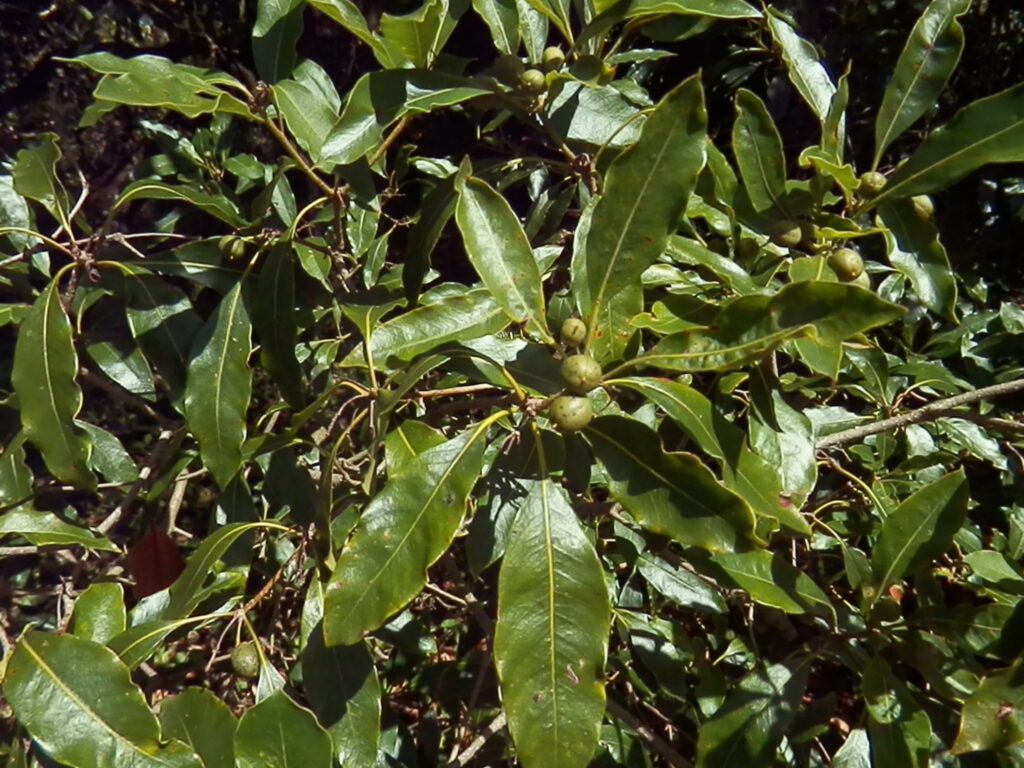Why Victoria is in need of stronger local tree protections

Feature Image: Australian Cheesewood, also known as Sweet Pittosporum (Pittosporum undulatum)
Two cases of lawful but problematic tree removals that occurred in December 2023 and early 2024 have recently highlighted some of the difficulties faced in providing adequate and timely tree protection for significant trees. While there are stronger protections afforded to endangered native trees and trees in Cultural Landscapes included in the Victorian Heritage Register, it is crucial to have mechanisms in place to protect trees that may not meet these thresholds but are still important at the local level.
The National Trust advocates for the statutory protection of trees on public and private land. We believe the best way to achieve protection for such trees, is through the establishment and maintenance of local Significant Tree Registers managed by local councils. There is no consist law on how councils should implement Significant Tree Registers in their municipalities.
In 2023, we wrote to every council in Victoria enquiring about their current tree protections and found that many councils do not have adequately protect locally significant trees from inappropriate management and removal. Some council registers, such as City of Boroondara, protect trees through local law, while others have no statutory protection, like Wyndham Council. In the City of Melbourne we found that only trees registered on private land are protected via planning scheme overlays, whereas in Frankston Council only trees on public land can be included in the register. Many councils like Surf Coast Shire have no register at all.
We have found that it is not sufficient alone to create a list of significant trees if they are not also legislatively protected through local planning scheme overlays or local law. The National Trust is a non-government, not-for-profit organisation, therefore trees on the National Trust Significant Tree Register are not legally protected. As such, we advocate for councils to provide the necessary statutory protections for significant trees in their municipalities.
Norfolk Island Pine (Araucaria heterophylla), Aireys Inlet:
Aireys Inlet and District Association have been strongly and passionately advocating for the establishment of a local Significant Tree Register in Surf Coast Shire to protect trees on private and public land. Earlier this year, a Norfolk Island Pine (Araucaria heterophylla) on a private property (not far from Bark Hut Reserve) in Aireys Inlet was removed despite community opposition. The tree was estimated to have been planted around 160 years ago.
While it is commendable that Surf Coast Shire has strong protections for indigenous vegetation, Council’s protections for non-indigenous trees are lacking, with the exception of a few listed under Heritage Overlay. We believe stronger protections need to established in the municipality to identify, celebrate and safeguard other locally significant trees such as this Norfolk Island Pine against further loss.
Australian Cheesewood (Pittosporum undulatum) (T12496), Melbourne:
In December 2023, we were alerted to the removal of a National Trust listed Significant Tree, Australian Cheesewood (Pittosporum undulatum) (T12496) at 100-104 A’Beckett Street, Melbourne (HO993). The property was previously owned by the City of Melbourne, and sold in mid-2023. The new owners wasted no time in felling the mature tree which provided greenery and shade to nearby residents and habitat to native fauna in the urban environment. Despite the National Trust’s best efforts to establish contact and negotiate the retention of this exceptional tree, the agency representing the owner refused to engage with us. Neighbouring local residents also made attempts to protect the tree, however contractors cut it down during the night. Despite the disheartening outcome, removal of the tree was completely lawful (no permit was required).
For tree registers like the City of Melbourne’s, the process of updating often involves community nominations, arborist assessments, council committee review and endorsement, feedback from an independent planning panel and Ministerial approval. The lengthy nature of the planning process is by no means the fault of councils, but it is the nature of a system that is not adequately equipped to protect locally significant trees under urgent threat. In such cases, protection through local laws may be a better approach enabling faster registrations.
The National Trust’s vision is for every council in Victoria to have a local Significant Tree Register that legally protects native and non-native trees on both private and public land. The two cases mentioned in this article are a reminder to be proactive. If there is a tree you think may be significant, nominate it to your local council’s Significant Tree Register (if they have one), even if there is no apparent or immediate threat. If your Council does not have a Significant Tree Register you can write and encourage them to commence the process of establishing one.
Thank you for drawing attention to the loss of trees. Our local community has put a lot of effort into identifying and listing trees that are a vital part of our natural environment. Unfortunately our local government appears to cater to the needs of developers, by allowing removal of trees considered ‘in the way of house lots’. Trees on public land are dealt with in an equally cavalier manner.
I commend your intention to call for protection of trees on public and private land. May I also ask for consideration of groups of trees. Research in to life underground of communities of trees makes preservation of groups of trees essential. Peter Wohlleben in his books The Hidden Life of Trees and The Power of Trees makes a cogent argument for understanding the importance on the underground life of trees for their health and the health of humans as a consequence.
Very sad to hear of this destruction. The culprit obviously knew they were in the wrong as they acted under cover of darkness